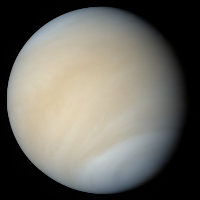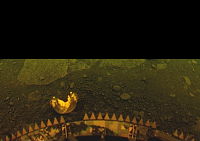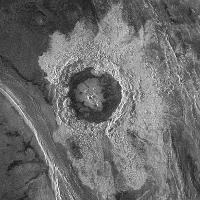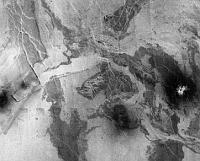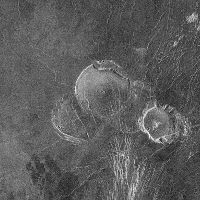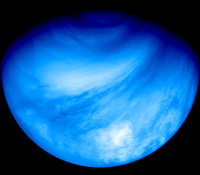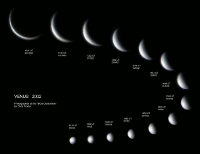Beauty
The pearly, white clouds of Venus shine in the sunlight, so from Earth, Venus is the brightest planet in the sky. It is so bright that it casts shadows, and can even be seen during the day! The ancients named Venus after the goddess of love and beauty. When the telescope was invented, the phases of Venus became visible. That was an important observation because the timing of the phases proved that Venus orbited the sun, and also that its orbit was smaller than Earth's.
Clouds
Until the 1960's, people imagined alien life and thick rainforests under the clouds. Then the first planetary probes were launched, and the reality was shown to be quite different: The entire surface bakes at 900° Fahrenheit, and the clouds are made of sulfuric acid! The atmosphere is made almost entirely of carbon dioxide, which absorbs heat, and helps to warm the planet in what is called the greenhouse effect. The acid rains down continuously, but it evaporates before it gets to the surface, and blows back up into the cloud layer.
Harsh Surface
The surface of Venus is very different from that of Earth. Besides the extreme heat, there is the air pressure. The atmosphere is 90 times as thick as Earth's making the air pressure extremely high—even the average submarine would implode! The wind is very slow, but it's strong enough to blow pebbles around like dust gets blown around here. It would also be 117 Earth days from one morning to the next!
Spacecraft
A lot of what we know about Venus comes from the Soviet Union's landers in the 1960's and '70's. Most of the rest came from a US mission called Magellan, which mapped the entire surface using a radar to see through the clouds. Some of the radar images are on this page. Radar images are not like camera images: In a radar image, smooth areas show up dark, and bumpy or rough areas are bright.

